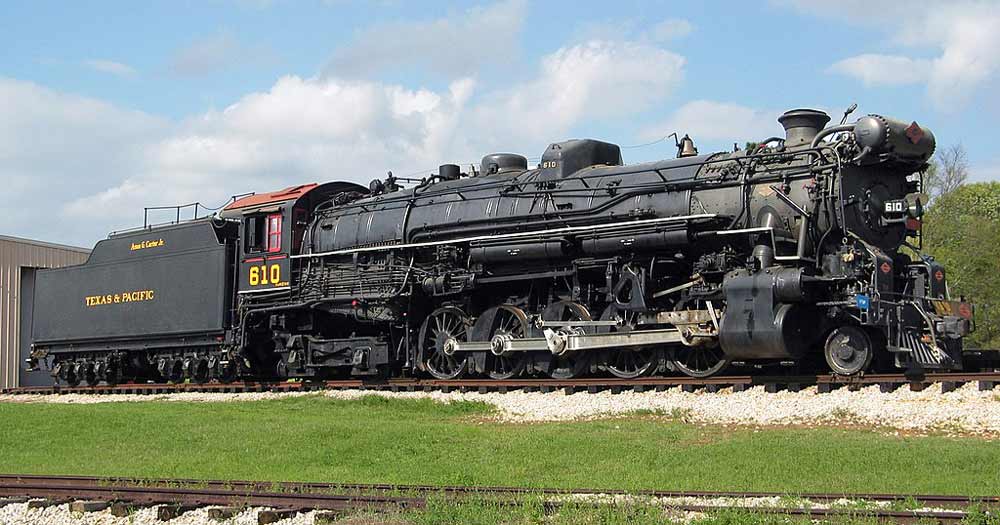2-10-4, Texas Type
To identify locomotives, American railroads use the “Whyte Notation” system. Steam locomotives classified as 2-10-4 under “Whyte” have two pilot wheels, ten driving wheels, and four trailing wheels. A 2-10-4 is traditionally known as the “Texas Type”.
You can visualize a 2-10-4 Texas Type as having this wheel arrangement:
oOOOOOoo

History of the 2-10-4 Type
The first 2-10-4 locomotive was built by Baldwin in 1919 for the Atchison, Topeka, and Santa Fe. The new locomotive type was seen as an improvement to the railroad’s 2-10-2 Santa Fe type locomotives. Though the company continued to order and receive more of the Santa Fe type, some locomotives were retrofitted with a new truck to provide four trailing wheels. However the AT&SF did not move forward with the 2-10-4 design until 1930, engine #5000, “The Madame Queen”.

The 2-10-4 made its official debut in 1925 when Lima Locomotive Works delivered these locomotives to the Texas and Pacific Railroad. As was customary, the first official delivery provided the locomotive’s nickname, so “Texas Type”. On a few other railroads, a 2-10-4 was given other names. For instance, it was a “Colorado Type” on the Burlington Route and a “Selkirk Type” in Canada.
Several other railroad companies rostered these Texas locomotives, including the Pennsylvania Railroad which had more than 125 of these locomotives, the most of any railroad. A total of 430 Texas type locomotives saw service on North American railroads; Almost all were scrapped throughout the 1950s.
Where to See a 2-10-4 Texas Type
Fortunately for railfans, there are several of these locomotives that have been preserved and restored. A few of the museums in the United States that currently have Texas Type locomotives on display include:
- The Museum of Transportation in Saint Louis, Missouri
- The National Railroad Museum in Green Bay, Wisconsin
- The California State Railroad Museum in Sacramento, California
- The Texas State Railroad in Rusk, Texas
- The Salvador Perez Park in Santa Fe, New Mexico

A longtime railfan, Bob enjoys the research that goes into his articles. He is knowledgeable on many railroad topics and enjoys learning about new topics. You can get a hold of Bob at his email link below.







